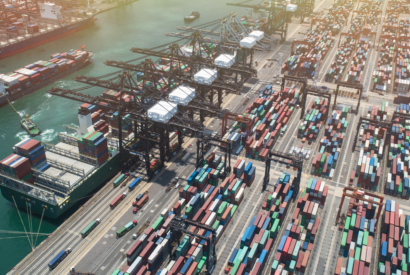by Matt Gherardi
Almost two years ago, we took a look at the burgeoning role of robotics in retail. Since then, robotic offerings have become even more diverse and have been applied to warehousing and supply chains.
In early 2017, we still can’t say that robotics has become the norm. However, we are certainly seeing a continuation of the trend towards automation in retail.
Let’s take a look at the state of play again.
In store
OSHBots
Back in March 2015, the OSHBot was just entering its pilot phase.
These robot assistants were an attempt at solving the problem that many DIY customers have of finding the goods they are after. The robots stand at 5-foot tall and are designed to roam around Lowe’s stores offering advice on how to find specific products customers are looking for.
After achieving success during the first pilot, the robotic DIY assistant has evolved into the LoweBot and is being using in an expanded pilot at 12 Lowe’s stores across the USA. It seems like the newest incarnation of the Oshbots is here to stay at Lowe’s.
Budgee
This smart personal shopping cart developed b 5 Elements Robotics has now been followed up with an offering aimed at retailers rather than customers.
The new DASH robotic cart is an intriguing addition to the store customer proposition. The smart trolley can map a user’s route through the store based on a shopping list. DASH then acts as a mobile POS as customers place items in the cart. Once the customer has finished their route around the store, DASH will accompany them to their cars and then park itself away at the end of the process.
One interesting side benefit to DASH is that it will enable retailers to get valuable insight into customer’s shopping lists. Incorporating this view on potential products customers are looking for but are not in the store could provide us with even more direction when it comes to forecasting and planning for demand. DASH could also be used as a platform for offering tailored deals to customers based on their shopping habits.
Bossa Nova
Robots are also being incorporated into staff support functions in stores. Bossa Nova has developed a robotic store assistant that isn’t customer facing like the Osh/LoweBot. Their offering is a tall robot on wheels that will roam stores and keep track of stock levels. This will provide up to date information to human employees and also gathering valuable data on stock levels
In the warehouse
Otto
Robotics has also been applied to warehousing. Amazon has long sought to eliminate the cost of labour in the task of picking and shipping items in the warehouse. Its automation in this area is well documented, however the robots Amazon uses get their directions from barcodes and need specially designed or modified warehouses to function.
Otto Motors, a subsidiary of Clear Path Robotics, has found a way to bypass this need using guiding lasers, warehouse mapping and machine learning. Their product, Otto, is a pallet moving robot that can move up to 1.5 tonnes and can be deployed into most well sized warehouses without any modification. Otto itself weighs 500 kg, bringing its total weight to 2 tonnes. You might think that this might pose a safety risk to humans in the warehouse. However, Clear Path have emphasised safety in their design and vouch that they would not have brought the product to market if they weren’t fully safety confident.
And Otto isn’t even the only player in this developing market. Another company called Exotec Solutions has developed a similar offering which promises to “cut [warehouse] employees’ daily distance covered from 15km to 4km.”
Automating the movement of stock around a warehouse can free up humans to do the more complicated task of picking (which robots are not yet able to do as efficiently) and thus reduce cost and increase productivity.
Delft
As anyone who has spent time in warehouses knows, the task of picking the right product and moving it to the right places is what consumes the most time and energy. Robots like Otto and Amazon’s drones have already proven they can handle the movement side of these tasks as well as humans can. However, robots are still catching up on the complex task of picking the right product from the right crowded shelf.
Knowing the value of cracking this technology, Amazon has begun holding an annual competition to test the mettle of picking robots from around the world. Team contestants were scored on picking accuracy, speed and mistakes. The most recent Amazon Picking Challenge has produced some promising results.
The winner of the competition, a robotic arm called Delft with suction cups and a claw, was able to score much higher than expected on both precision and speed. Delft was able to pick 100 items per hour with a pick accuracy of 84%.
Sooner than expected, picking robots will beat the average pick speed of a human, 400 items per hour. Once this happens we will surely see them start to be introduced into warehouses and working alongside item moving robots like Otto.
Companies both large and small are continuing to invest in developing robotic capabilities so it seems highly likely that this trend will continue into the future. Examples of robots like Delft show the competition to develop efficient and cost effective robotic solutions is driving a pace of change faster than expected.
Robots with the capabilities to take on some warehouse and store based labour are already here; only time will tell how quickly and in what ways they will be adopted.
Learn More
These are the Robots who are fulfilling your Christmas orders – Fastcompany.com
Robots in the Retail Aisle – Yahoo
Amazon Robots on the Rise – PYMNTS.com
Lowebot – Lowe’s Innovation Labs
Team Delft Wins Amazon Picking Challenge – Spectrum
How Robots moved from Science Fiction to the real world in 2016 – VentureBeat








